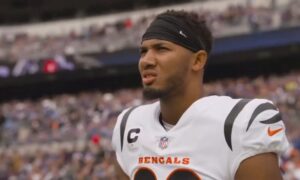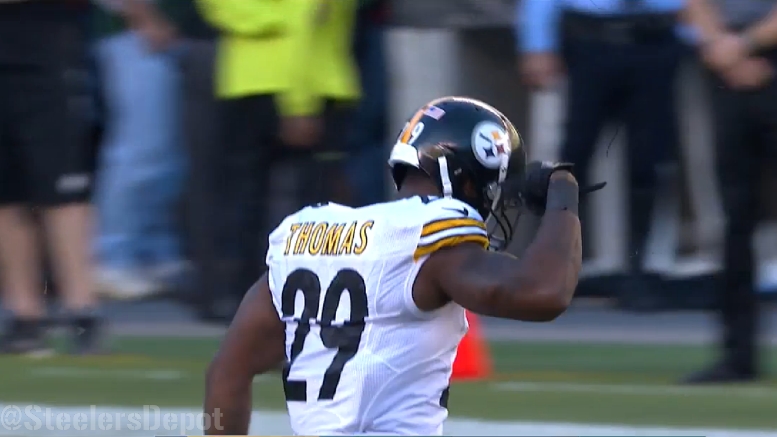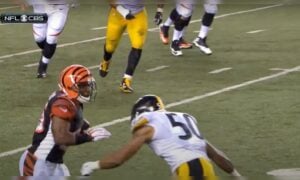Sometimes, when watching tape, an idea forms in your head. But the eye test doesn’t always tell the story. That’s why this site was built on marrying tape and statistics. We don’t shun the data, and we definitely don’t turn our noses up at the film. Both have their place, and the best information comes when both are used. This led me to do a deep dive into why Russell Wilson has struggled so much.
Reviewing the Cincinnati Bengals game and the Steelers’ four-game slump, it felt to me like Wilson struggled more against zone than man coverage. Intuitively, that made sense. Wilson has never been regarded as an ultra-cerebral quarterback like a Peyton Manning or Drew Brees. It’s why Sean Payton and Wilson mixed like oil and water. There are veteran things Wilson does well, his hard count and cadence is a real weapon, but he’s at his best when he can use his arm talent to chuck it deep and let receivers like George Pickens make a play.
To determine if the eye test was accurate, I asked our stats expert, Clayton Eckert, to pull the data from Sports Information Solutions to examine Wilson’s numbers against man and zone coverage. We eliminated combination coverages, spikes, and goal-line moments to get as clear a picture as possible. Here’s what the data shows.
Russell Wilson, Man Vs. Zone Coverage (2024)
| Russell Wilson (2024) | Man | Zone |
|---|---|---|
| Completion % | 58% | 66.8% |
| Touchdowns | 8 | 4 |
| Interceptions | 2 | 3 |
| On-Target % | 70.5% | 81.4% |
| ANY/A | 7.9 | 5.6 |
| QB Rating | 105 | 87.4 |
| Throw Depth | 11.1 Yards | 8.1 Yards |
| EPA | 2.94 | -10.11 |
Overall, the numbers back up the eye test. Wilson is far more effective against man coverage than he is zone. While Wilson has a higher completion and on-target percentage, his depth of target is lower, which naturally bumps up his completion percentage. And while I don’t have the league-wide data, I’d bet quarterbacks have a higher rate against zone being able to throw into open windows than more contested coverage.
But every other metric favors man coverage. He has double the touchdowns, fewer interceptions (despite far fewer man-coverage dropbacks), a significantly higher ANY/A (viewed as the best measure of quarterback success), a near-20-point higher quarterback rating, and an EPA that is night and day. Positive against man, woefully poor versus zone.
With Eckert’s additional date, here are the weekly man and zone rates Wilson and the Steelers have faced since he became the starter in Week 7.
| Team/Week | Man | Zone |
|---|---|---|
| Week 7 – Jets | 40% | 60% |
| Week 8 – Giants | 43.3% | 56.7% |
| Week 10 – Commanders | 51.7% | 48.3% |
| Week 11 – Ravens | 34.2% | 65.8% |
| Week 12 – Browns | 18.8% | 81.2% |
| Week 13 – Bengals | 47% | 53% |
| Week 14 – Browns | 62.5% | 37.5% |
| Week 15 – Eagles | 0% | 100% |
| Week 16 – Ravens | 26.5% | 73.5% |
| Week 17 – Chiefs | 29.8% | 70.2% |
| Week 18 – Bengals | 41.2% | 58.8% |
There’s a clear trend towards Wilson’s best games and facing more man than zone. Understand that virtually every team plays more zone than man in general (here’s one 2023 dataset that illustrates that), but against the Jets, Giants, Commanders, and first Bengals’ game, Wilson saw at least 40 percent man coverage. In rougher outings against the Ravens, the first Browns game, Eagles game, and Chiefs game, losses in all but the first Baltimore game (where Wilson threw for 205 yards, no touchdowns, and a bad pick), he saw far less man coverage.
This probably isn’t breaking news. I bet Wilson has had similar splits throughout his career, given that his playing style hasn’t dramatically changed. And there are other elements of his game that teams have a read on, such as his tendency to throw deep and not utilize the middle of the field as often. The book is out on Wilson and the Steelers’ offense. Play zone and prosper. I’d expect the Baltimore Ravens to lean on that this weekend in what could be Wilson’s final game with Pittsburgh.







